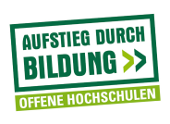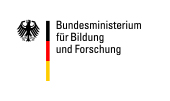Management Aspects of Systems Engineering II
Modulgruppe: Management-Aspekte
After working through this course you will be able to explain risk and opportunity management and the reasons for its application. You will describe the differences between safety and security and you will be aware of some major standards in his area and their application domain. A second focus of the course is model-based systems engineering (MBSE) enabling a more efficient and structured way to manage and design complex systems.
Introductory Lecture:
- new dates will be announced
The Description of the module you find here.
- MBSE:
1. Modelling with SysML, basics and terms
2. Use Case analysis
3. Structure diagrams
4. Behaviour diagrams - Introduction to Risk and Opportunity Management
- Difference between product safety, functional safety, and security. Indroduction to major standards in this area.
- Planning using PBS and WBS
- Introduction to product family engineering and feature models
After working through this course you will be able to explain risk and opportunity management and the reasons for its application. You will describe the differences between safety and security and you will be aware of some major standards in this area and their application domain. Based on a product breakdown structure (PBS) of the system you will identify the related work for each item. Based on the work break down structure (WBS) you generate the inputs for project planning.
Reuse within product families is a major precondition to be competitive with your products in a demanding market. After working through this course you will know the basics and the methods for product family engineering, which is a beneficial approach to foster planned reuse in development projects. You will use feature models to manage system element variations and associated feature constraints.
A second focus of the course is model-based systems engineering (MBSE) enabling a more efficient and structured way to manage and design complex systems. After working through this course you will apply modelling technics and methods for analysing the problem space and for structuring the system. You will be able to explain the differences between UML and SysML and you will know the basic modelling elements of SysML. You will recognize and explain the advantages of a model based tooling compared to a simple graphical drawing tool and you will understand the SysML diagrams as a view on the model elements and their associations and relations.
At the end of the module, you will be able to use use-cases to identify major
operational scenarios with the stakeholders with its required high level functions and collaboration aspects, thus allowing eliciting a concise set to stakeholder requirements. You will use SysML to structure the system and to show hierarchical relations. Furthermore, you will use SysML activity charts and state charts to model the behaviour of a system, as well as its operational modes and states.
The online part of the study programme takes place in self studies and in form of group work. For the self study part video lectures with detailed information about the contents and an elaborated script is offered. The script is developed especially for extra-occupational learners in regard to the didactic concept of Ulm University. It contains learning stopps, multiple and single choice tests, quizzes, exercises, etc.
Your mentor will offer online seminars in periodic intervals. These seminars will help you handling the exercises and working on the learning matters. An online forum for exchange with the other students will also be available.
Requirement is a first graduate degree.
Contentual: Management-Aspects of Systems Engineering I
Recommended requirements:
- Desktop computer or notebook, with a supported version of Microsoft Windows, Apple macOS or Linux
- Headset
- Current version of Mozilla Firefox, Google Chrome, Apple Safari or Microsoft Edge
- Access to the internet (e.g., via xDSL, Cable, LTE, 5G) with a minimum data rate of 3 Mbit/s for downstream and 384 kbit/s for upstream.
In case of questions regarding the technical requirements, please don't hesitate to contact us.
Zur Modulprüfung wird zugelassen, wer die Aufgaben aus den Übungen erfolgreich bearbeitet hat. Die Note setzt sich zusammen aus:
Praktikumsarbeit: 40 %
Schriftliche Modulprüfung (multiple choice): 60 %.
After finishing your exame successfully you will get a certificate and a supplement, which will list the contents of the module and the competencies you have acquired. In the supplement the responsible person for the module confirms you the equivalent of 6 credit points (ECTS).
Lecturers
Michael Leute
System Engineer bei Airbus
Sascha Ackva
System Architect bei Continental

Gefördert von:



